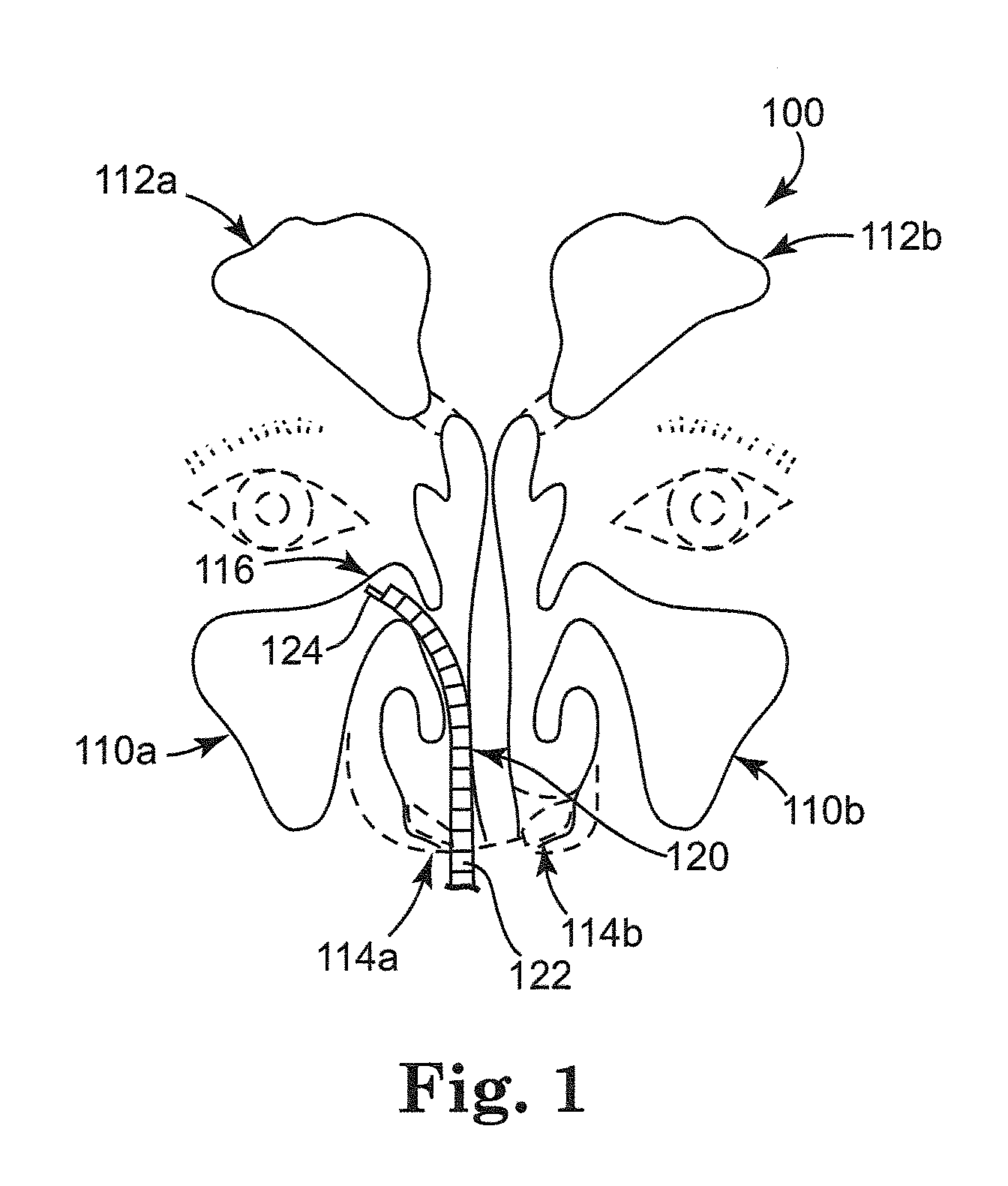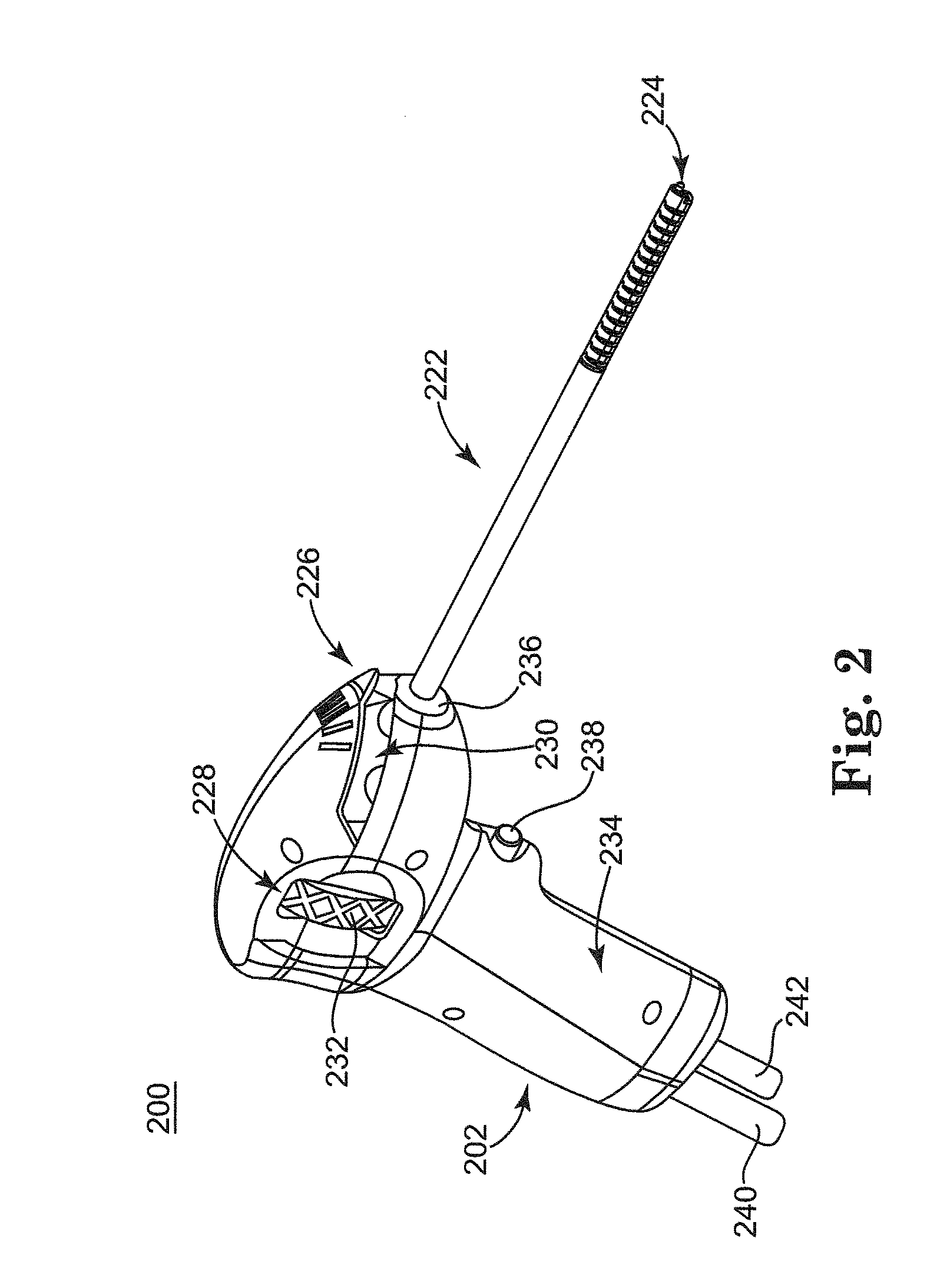Rehydratable polysaccharide particles and sponge
- Summary
- Abstract
- Description
- Claims
- Application Information
AI Technical Summary
Benefits of technology
Problems solved by technology
Method used
Image
Examples
example 1
Dehydrothermally Crosslinked CMC
[0071]Powdered sodium carboxymethylcellulose (CMC 52MSC from Emerging Technologies, Inc.) was combined with 1% titanium dioxide and dehydrothermally crosslinked by warming to 140° C. over 10 hours, heating at 150-160° C. for 40 hours, and cooling to ambient temperature over 10 hours. A free-flowing, white powder with an average particle diameter of about 40 μm was obtained. The powder was packaged in 1.5 gram portions in polyurethane pouches and E-Beam sterilized at 30 kGy.
example 2
Syringe Rehydration and Dispensing
[0072]A 0.7 g portion of the Example 1 CMC powder was combined with 3 mL deionized water in a 10 mL LUER-LOK™ syringe (from Becton, Dickinson and Co.). The syringe was connected to a second such 10 mL syringe using a LUER™ connector (from Becton, Dickinson and Co.) and the syringe plungers were alternately depressed in an effort to rehydrate the powder. A poorly-mixed mass containing many clumps was obtained, and the clumps occluded the passage between the syringes. In a second run, a 0.7 g portion of the Example 1 CMC powder was combined with 0.5 mL ethanol and shaken, resulting in an apparently stable suspension. A 3 mL portion of deionized water in the second syringe was added to the suspension and then the syringe plungers were alternately depressed to mix the ingredients, resulting in the gradual formation of a clear, homogenous hydrogel which was completely free of visible unhydrated CMC particles. The hydrogel could readily be injected throug...
example 3
Adhesion
[0073]Samples of the Example 2 gel were placed between collagen-coated pins in an MTS tensile testing machine (MTS Systems Corp.), and evaluated at a separation rate of 25.4 mm / min to determine tensile adhesive strength for the gel-collagen bond. A value of about 55 kPa was obtained, whereas only about 35 kPa was obtained using a gel made with uncrosslinked CMC powder.
PUM
| Property | Measurement | Unit |
|---|---|---|
| Fraction | aaaaa | aaaaa |
| Fraction | aaaaa | aaaaa |
| Acidity | aaaaa | aaaaa |
Abstract
Description
Claims
Application Information
 Login to View More
Login to View More - R&D
- Intellectual Property
- Life Sciences
- Materials
- Tech Scout
- Unparalleled Data Quality
- Higher Quality Content
- 60% Fewer Hallucinations
Browse by: Latest US Patents, China's latest patents, Technical Efficacy Thesaurus, Application Domain, Technology Topic, Popular Technical Reports.
© 2025 PatSnap. All rights reserved.Legal|Privacy policy|Modern Slavery Act Transparency Statement|Sitemap|About US| Contact US: help@patsnap.com



